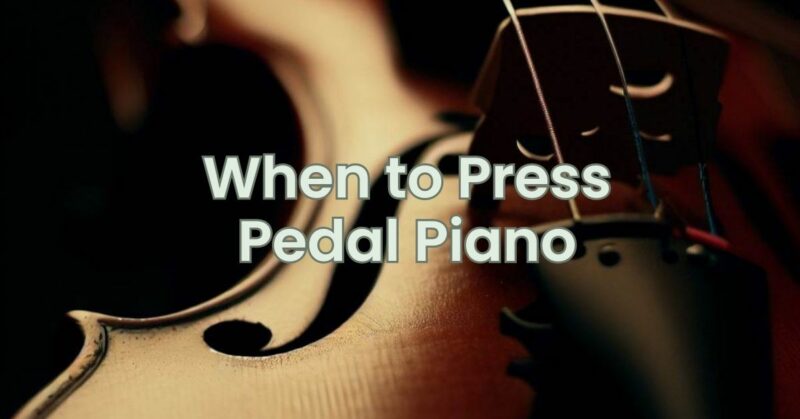The piano pedal is a powerful tool that allows pianists to enhance their playing by adding depth, resonance, and sustain to the sound. However, knowing when to press and release the pedal is crucial to maintain clarity, articulation, and musicality. In this article, we will explore the different scenarios and techniques for using the piano pedal effectively, helping pianists make informed decisions about pedal usage in their performances.
- Depressing the Sustain Pedal: The most commonly used pedal on the piano is the sustain pedal, located on the right side. Here are some situations where you should consider depressing the sustain pedal:
- Legato Playing: Use the pedal to connect notes smoothly in legato passages, allowing them to resonate and blend together.
- Sustaining Chords: When playing chords, especially in a sustained manner, depressing the pedal will allow the sound to continue while freeing up your hands to play other notes.
- Long, Resonant Phrases: Press the pedal to enhance the resonance and sustain of longer phrases, creating a fuller and more expressive sound.
- Releasing the Sustain Pedal: Knowing when to release the sustain pedal is equally important as knowing when to depress it. Here are some instances where you should consider releasing the pedal:
- Staccato or Detached Playing: In staccato passages or when you want clear separation between notes, release the pedal to prevent excessive blending and maintain crisp articulation.
- Changing Harmony: Lift the pedal at the end of a musical phrase or when there is a change in harmony to avoid muddying the sound and create a clean break.
- Soft and Delicate Passages: Releasing the pedal can help achieve a more delicate and intimate sound, especially in quieter sections or sensitive musical moments.
- Using the Soft Pedal: The soft pedal, located on the left side of the piano, is also known as the una corda pedal. It serves to create a softer and more muted sound. Consider using the soft pedal in the following situations:
- Dynamic Variation: When you want to reduce the volume or achieve a more delicate sound, depress the soft pedal to engage the mechanism that shifts the hammers’ position.
- Enhancing Tone Quality: The soft pedal can also alter the tonal color of the piano, giving a more veiled, ethereal, or distant quality to the sound.
- Exploring the Sostenuto Pedal: The sostenuto pedal, found in some pianos, is often placed in the middle. It allows for selective sustaining, meaning that only the notes held down at the time the pedal is depressed will continue to sustain while the rest of the keys are unaffected. This pedal is commonly used in specific musical contexts, such as sustaining a bass note while playing a melody over it.
- Trusting Your Musical Interpretation: Ultimately, when to use the piano pedal is a matter of musical interpretation and personal style. As you become more familiar with different pieces and musical genres, trust your musical instincts and experiment with different pedal techniques to find the right balance of clarity, resonance, and expression.
Understanding when to press and release the piano pedal is a vital skill for pianists seeking to convey their musical intentions effectively. By considering factors such as legato playing, sustained chords, changing harmonies, staccato passages, and delicate sections, you can make informed decisions about pedal usage. Remember that pedal technique is a dynamic and nuanced aspect of piano playing, and as you refine your skills, your ability to enhance the musicality and expression of your performances will flourish.


